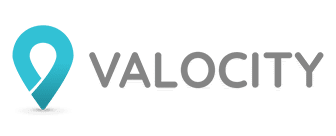A recent press release from Gartner stated that worldwide spending on IT is likely to reach US$4.4 trillion this year, of which almost US$675 billion will be on software. With technology playing a vital role in almost every aspect of business and IT investments accelerating year-on-year, the decision on whether to build versus buy has found its way onto many a board paper over the past decade. While there is no right or wrong answer, there are number of factors to consider when it comes to building technology in-house or buying a ready-to-use solution from a specialised technology company, not the least being whether the organisation can allocate the required resources (such as budget and personnel) without adversely impacting day-to-day operations.
Being a SaaS company, naturally Valocity advocates for the decision to buy. But this isn’t arbitrary – in partnering with businesses around the world, we’ve heard their stories and seen first-hand how deploying a reputable and proven solution can accelerate digital transformation and be more comprehensive and cost-effective than bespoke solutions.
Here are five critical factors when considering whether to build or buy:
In-house capability
In the past, the argument for building technology in-house has often been won due to concerns about third-party solutions not meeting specialised needs, or difficulties integrating with existing legacy systems. However, with almost every organisation today looking to design and execute exceptional digital customer experiences across multiple channels, there has been a significant increase of the number of SaaS companies offering solutions that better meet the needs of modern businesses. And as more complex digital ecosystems are required, having the capability in house to build and maintain the technology is becoming an increasingly sizeable ask.
When developing in house, there becomes a heavy reliance on the team. And this can be a risk – staff attrition can mean loss of skills and IP, plus the cost to hire and train new staff can be high. Furthermore, building in house means a significantly longer roadmap to market. If efficiency and speed is necessary, buying is a great option. Many vendors are willing to work with their clients to design and improve their solutions.
A rule of thumb can be applied when assessing whether to build or buy: if the commercial software fit is 60 per cent or more, then buy is the best choice.
A great example of where buying may be the best option is with Indian SaaS company, Zoho. Zoho provides services such as CRM, inventory management, mobile application development and project time tracking. To build a complex and highly integrated bespoke system delivering these functions would take a significant amount of time to scope business requirements, design, build and implement the technology. With Zoho, this work has already been done over many years by experts with this technology as their sole focus. Chances are, Zoho provides a richer and broader set of features than what an in-house team could deliver, and it’s available immediately.
Cost
There are three aspects to the cost of building in house. The first is the resources required to develop the product. The more people on the team, the faster the build is likely to progress, but the higher the workforce overheads.
The second is the ongoing infrastructure, hosting, maintenance, and development costs. With SaaS solutions, these costs are shared among the subscriber base, but with an in house developed solution, these costs are borne entirely by the business, and they can be substantial.
The third cost is time. The time it takes to build the solution and the potential opportunities that may be missed in the absence of the tech.
And, from a balance sheet perspective, the pay-per-use nature of SaaS is an opex line item as opposed to building in house, which requires capex.
An example of where the cost of building in house would be disproportionately high is in the AI space. Indian SaaS company Qubole provides a cloud-based data lake platform for self-service AI, with an analytics platform based on AWS, Microsoft Azure and Google Cloud. The significant resources required would be expensive based on the specialist knowledge needed for this type of technology, and the build time could be vast. Instead, integrating Qubole into existing systems would be far quicker and more cost effective.
Integration
Any digital ecosystem of applications must be able to integrate with technology that is developed outside of the business. For example, if your organisation uses Salesforce CRM and you need an Enterprise Resource Planning (ERP) solution to manage your main business processes, it is almost certain that a more advanced and comprehensive solution that plugs straight into Salesforce already exists off the shelf than what an in-house team would be capable of building within a reasonable timeframe. Significant business value can be achieved through an ecosystem of third-party solutions that seamlessly connect and co-exist with each other.
A nice example of connectivity is Klenty, a sales engagement tool that provides a customised marketing email and lead follow up solution. This software automates repeatable tasks within the sales process while providing engagement tracking metrics. It integrates with most major off-the-shelf CRM systems, is highly cost-effective and enables the sales and marketing teams to concentrate on converting leads.
Security, maintenance, and continuity
As mentioned earlier, one aspect is the build but there is also ongoing security, maintenance, and continuity of the solution. Cybersecurity is a significant consideration for any organisation and therefore any technology offering, whether built in house or purchased, must be able to provide trust and assurance that data will be secure.
A sustainable system will need to be evolved – there will be security patches, upgrades and updates plus ongoing requests for new features. In house teams would need to have both availability and capability to manage security, maintenance, and continuity of an internally built solution – increasingly critical for larger organisations that have complex technical architectures. Without these things, in house technology will eventually become obsolete. In many instances, organisations may continue to use legacy systems that are increasingly unfit for purpose, which is a significant business risk, both from cybersecurity and competitive perspectives.
Reputable SaaS platforms are usually as secure (if not more) as in house or third-party data centres and bring greater expertise to the table by the technology being their sole focus. CustomerLabs is an Indian SaaS company providing an all-inclusive customer data platform software solution. It serves all business types, from SMEs to enterprises with an end-to-end solution that includes behavioural analytics, GDPR compliance, personalisation, and customer profiling. The ongoing maintenance, updates, and regulatory compliance of a platform of this scope and scale would be immense and require a large and multifaceted in-house team, whereas to buy, all these factors are taken care of by the supplier.
Competitive advantage
The final consideration is whether the solution you need will give your business a competitive advantage. The time and cost required to develop a bespoke solution in house needs to be weighed against the competitive benefits the solution will provide. All technology brings benefits, but some may be more operational or internally focused, for example technology that replaces humans within repetitive or mundane processes and enables teams to focus on more meaningful tasks. This technology is incredibly necessary but may not offer a direct competitive advantage to the business and therefore a significant expense to build in house may not be justified.
A great example of an internally focused SaaS product is Keka, an HR and payroll management solution created to address real time HR issues and manage employees. While this software will not necessarily give an organisation a competitive advantage, it handles the more operational tasks, which allows HR personnel to focus on more strategic activities.
Digital ecosystem
In many cases, when you buy SaaS, you are also buying into a digital ecosystem whereby the software provider’s focus is not solely on the software, but also on what will benefit the customer, their customers, and the sector they are catering to. And in doing so, you will often find an ecosystem of SaaS platforms that integrate with and complement each other, just like the Salesforce example we mentioned earlier on.
The real beauty of SaaS, however, is that the technology is developed using the collective insights and wisdom from all the vendor’s customers. For example, functionality that may have been developed for a large bank can also be made available for a smaller financial institution. And similarly, knowledge of best practice and industry process is shared and evolved amongst all users of the platform. Therefore, the power of a technology ecosystem cannot be understated because, if you buy well, you’ll be getting best practice, latest tech and cutting-edge innovation all delivered to you as a cost-effective service.
It goes without saying that Valocity is a great example here. Not only does our technology automate the property valuation process whilst driving time and cost efficiencies, we operate within a constant cycle of innovation as well as building insights and analytics that add significant value and will benefit both the industry and end-customer.
SaaS companies have grown in scope and scale over the past decade, becoming integral to catering to the technology needs of organisations globally. In India, SaaS companies have become some of the most recognised tech brands and they account for 12 per cent of funding and 10 per cent of jobs. Quite simply, SaaS is a sector that is rapidly growing. For Valocity’s Head of India Product and Technology Vikas Arora, being part of a such a dynamic sector is an exciting challenge.

“Here at Valocity we are always pushing the limits of innovation because we know how critical our product is to the success of our clients’ businesses. It’s not just about delivering great tech to meet a need; it’s about deeply understanding the landscape our clients operate within and always staying ahead of the curve with what we are developing. In the SaaS world, you never stop the forward momentum, and it is this specialised knowledge and capability that makes these kinds of solutions so integral to digital ecosystems.”
Talk to us
As a world-class technology partner, Valocity digitally connects lenders and valuers to enables quality data capture, increased efficiency and accuracy and a more seamless customer experience for the entire property ecosystem, including the end customer.
For more information about how Valocity can help you simplify bank processes and deliver significant value, speak to a member of our team today.

